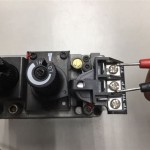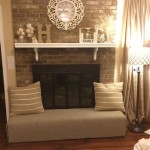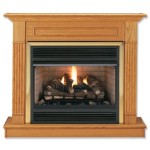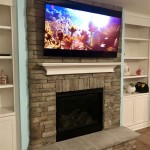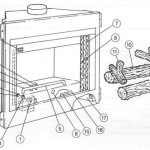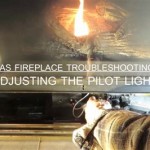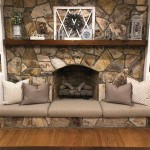Electric Fireplace Heaters: A Comprehensive Overview
Electric fireplace heaters represent a popular and convenient heating solution for homes and offices. They offer a combination of aesthetic appeal and functional heating capabilities, often mimicking the appearance of traditional wood-burning fireplaces without the associated complexities and environmental concerns. This article aims to provide a comprehensive understanding of electric fireplace heaters, covering their functionality, types, advantages, and factors to consider when selecting one.
The core function of an electric fireplace heater is to generate and circulate heat within a given space. Unlike traditional fireplaces that rely on combustion, electric fireplaces utilize electricity to power heating elements. These elements, typically resistance coils or infrared bulbs, convert electrical energy into thermal energy. A fan then distributes the heated air into the room, providing supplemental heating. The visual effect of flames, often created by LED lights reflecting on a rotating screen or simulated logs, adds an aesthetic dimension, imitating the ambiance of a real fireplace.
The operation of an electric fireplace heater is generally straightforward. Users typically plug the unit into a standard electrical outlet and adjust the settings using a control panel or remote. These settings often include options to control the heat output, flame intensity, and brightness. Some models also include timers, thermostats, and safety features such as automatic shut-off mechanisms to prevent overheating.
Understanding the Key Components: Heating Elements and Flame Effects
The heating element is the heart of an electric fireplace heater. Two primary types are commonly used: resistance coils and infrared heaters. Resistance coil heaters function by passing electricity through a coiled wire, which heats up due to the resistance. A fan then blows air across the hot coils, circulating the warmed air into the room. These models are generally more affordable and widely available.
Infrared heaters, on the other hand, utilize infrared bulbs to generate heat. These bulbs emit infrared radiation, which directly warms objects and people in the room rather than heating the air itself. This can result in a more efficient and targeted heating experience. Infrared heaters are often considered more energy-efficient than resistance coil heaters, especially for heating smaller areas.
The flame effect is a crucial component of the aesthetic appeal of an electric fireplace heater. Various technologies are employed to create realistic-looking flames. Older models often used a combination of rotating mirrors and colored lights to simulate the flicker of flames. Modern designs incorporate more sophisticated LED technology and holographic projections to produce more convincing and dynamic flame effects. These effects can often be adjusted to control the brightness, color, and intensity of the flames, allowing users to customize the ambiance to their preferences.
The realism of the flame effect is often enhanced by the presence of artificial logs or embers within the fireplace. These can be made of various materials, such as resin or plastic, and are designed to realistically mimic the appearance of burning wood. Some models even include features such as crackling sound effects to further enhance the sensory experience.
Types of Electric Fireplace Heaters: A Variety of Options
Electric fireplace heaters are available in a wide range of styles and sizes to suit different needs and preferences. These can be broadly categorized into several types, including freestanding units, wall-mounted units, insert fireplaces, and electric fireplace mantels.
Freestanding electric fireplace heaters are typically portable units that can be easily moved from one room to another. They often resemble traditional wood stoves or smaller fireplaces and are ideal for supplemental heating in bedrooms, living rooms, or offices. Freestanding units are generally easy to set up and require no special installation.
Wall-mounted electric fireplace heaters are designed to be mounted directly onto a wall, saving floor space. These units often feature a sleek and modern design and can be a stylish addition to any room. Installation typically involves mounting the unit to the wall using brackets and connecting it to an electrical outlet. Some wall-mounted models are designed to be hardwired into the electrical system for a more permanent installation.
Insert electric fireplaces are designed to be inserted into an existing fireplace opening. These units offer a convenient way to convert a traditional wood-burning fireplace into an electric one without the need for major renovations. Insert fireplaces typically include a realistic flame effect and adjustable heat settings. Installation involves fitting the unit into the fireplace opening and connecting it to an electrical outlet.
Electric fireplace mantels combine an electric fireplace insert with a decorative mantel. These units offer a complete and stylish fireplace solution that can be easily integrated into any room. Electric fireplace mantels are available in a wide range of styles and finishes to complement different décor styles. Installation typically involves assembling the mantel and inserting the electric fireplace unit.
Advantages of Electric Fireplace Heaters: Convenience and Efficiency
Electric fireplace heaters offer several advantages over traditional wood-burning fireplaces. One of the most significant advantages is convenience. Electric fireplaces require no wood, no chimney, and no complicated installation. They can be easily plugged into a standard electrical outlet and operated with the push of a button. This eliminates the hassle of sourcing and storing firewood, cleaning up ashes, and maintaining a chimney.
Another key advantage is energy efficiency. Electric fireplaces are generally more energy-efficient than traditional wood-burning fireplaces. They convert a higher percentage of energy into heat, with minimal heat loss through the chimney. Furthermore, many electric fireplace heaters include features such as thermostats and timers, which allow users to control the heat output and reduce energy consumption. Some models also offer a flame-only mode, which allows users to enjoy the visual ambiance of the flames without generating heat.
Electric fireplaces are also considered safer than traditional wood-burning fireplaces. They produce no smoke, soot, or carbon monoxide, eliminating the risk of indoor air pollution and carbon monoxide poisoning. Electric fireplaces also do not produce sparks or embers, reducing the risk of fire hazards. Many models include safety features such as automatic shut-off mechanisms to prevent overheating.
Finally, electric fireplaces offer greater versatility in terms of placement and design. They can be installed in virtually any room in the house, regardless of whether there is a chimney or gas line. Electric fireplaces are available in a wide range of styles and sizes to suit different décor styles and spatial requirements. This allows users to create a cozy and inviting atmosphere in any room without the limitations of traditional fireplaces.
When selecting an electric fireplace heater, several factors should be considered. The size of the room to be heated is a primary consideration. Different models are designed to heat different sized spaces, so it is important to choose a unit that is appropriately sized for the room. The heat output of the fireplace is typically measured in British Thermal Units (BTUs) or watts. A general rule of thumb is that 10 watts of heating power are required per square foot of space.
The style and design of the electric fireplace should also be considered. Electric fireplaces are available in a wide range of styles, from traditional to modern, so it is important to choose a unit that complements the overall décor of the room. The quality of the flame effect is another important consideration. Modern LED and holographic technologies offer more realistic and dynamic flame effects than older models. Reading reviews and comparing different models can help in selecting a unit with a convincing flame effect.
Energy efficiency is another crucial factor to consider. Look for models with energy-saving features such as thermostats, timers, and flame-only modes. Infrared heaters are generally more energy-efficient than resistance coil heaters. The safety features of the electric fireplace should also be considered. Look for models with automatic shut-off mechanisms and cool-touch surfaces to prevent overheating and burns.
The price of the electric fireplace is also a consideration. Electric fireplaces range in price from affordable freestanding units to more expensive wall-mounted models and electric fireplace mantels. It is important to set a budget and compare different models based on their features, quality, and price. Finally, the warranty and customer support offered by the manufacturer should be considered. A good warranty provides peace of mind and ensures that the unit will be repaired or replaced if any problems arise.

60 Inch Recessed Wall Mounted Electric Fireplace 750 1500w Remote Oneinmil

18 Inch New Design Good Ing Built In Electric Fireplace Heater China Made Com

Edust 1000w Mini Electric Fireplace Heater With Log Flame Effect Warm Air Fanr 110 V 250v Fan Room In Buy

Adium Electric Fireplace Heater With 3d Simulation Flame Overheat Protection

50 Inch Temperated Glass Room Heater Home Appliances Electric Fireplace China Made In Com

Electric Fireplace Heater With Remote 28 X16 X 7 Inches At Best In Kurali R V A Etronics Private Limited

Livingandhome 60 Inch Led Electric Fireplace Wall Mounted Insert Heater 9 Flame Colours

Xtremepowerus Electric Fireplace Heater Infrared Quartz W Timer Remote Controller Built In Wheel 1500w

Homcom 750 1500w 16 Freestanding Electric Fireplace Heater Fire Stove Ca

25 Inch Freestanding Electric Fireplace Heater With Realistic Flame Effect Costway

